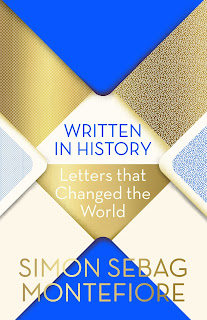History through the eyes of letters
Letters are still popular resources and often used in historical research, like biographies. Simon Sebag Montefiore recently published a book full of letters from different centuries and people. With every letter the author explains the context and background of it. For instance the moving final words of a wife to her husband and child while she is waiting for transportation to a concentration camp. But also letters from Donald Trump, Michelangelo etc. The idea of collecting letters is nothing new.
Finding letters
References to the existence of letters on a certain topic can for instance be found in newspapers. In 2016 the New York Times published an article on letters written during the white terror in Taiwan from 1947 to 1987.(1) And if you search in our CataloguePlus system on "historische brieven" or "historic letters" you wil find more than a thousand documents from antiquity to very recent.
Experiencing the past
Besides for biographies, letters can be used to experience the past. Similar books like the one from Montefiore were the inspiration for the Letters Live project. The aim of it is "to celebrate the enduring power of literary correspondence". On special events letters are read out loud by (usually well known) performers. A few of them can be found on YouTube:
Quick links
Finding letters
References to the existence of letters on a certain topic can for instance be found in newspapers. In 2016 the New York Times published an article on letters written during the white terror in Taiwan from 1947 to 1987.(1) And if you search in our CataloguePlus system on "historische brieven" or "historic letters" you wil find more than a thousand documents from antiquity to very recent.
Experiencing the past
Besides for biographies, letters can be used to experience the past. Similar books like the one from Montefiore were the inspiration for the Letters Live project. The aim of it is "to celebrate the enduring power of literary correspondence". On special events letters are read out loud by (usually well known) performers. A few of them can be found on YouTube:
- A seventeenth Century letter from a wife to her husband - read by Olivia Colman
- Letters (1675) between Sultan Mehmed IV and the Zaporozhian Cossacks - Read by Olivia Colman and Adrian Edmondson
- A 19th Century loveletter from a Yorkshire farmer - read by Taron Egerton
- Celebrating Christmas during WWI in the trenches - read by Peter Capaldi
- Correspondence between an 11 year old girl and Abraham Lincoln, read by Louise Brealey & Tom Hiddleston
Although a number of the letters in the book by Montefiore were translated in English, the contents capture the views by different people over time. As the Dutch writer Annejet van der Zijl explains:
"no matter how informative newspaper reports, interviews, eyewitness stories and records may be, you really get to know someone when you see their handwriting and hear their voice as it were". (Source)
Quick links
- Borrow or reserve the book via CataloguePlus
- Artikel in Trouw over Written in History
- Website Letters Live
Note
1. Example taken from the article by Annejet van der Zijl in Historisch Nieuwsblad. The article can now be found in the Proquest database of the NY Times.
1. Example taken from the article by Annejet van der Zijl in Historisch Nieuwsblad. The article can now be found in the Proquest database of the NY Times.
Updated: 07-10-2024




Comments
Post a Comment